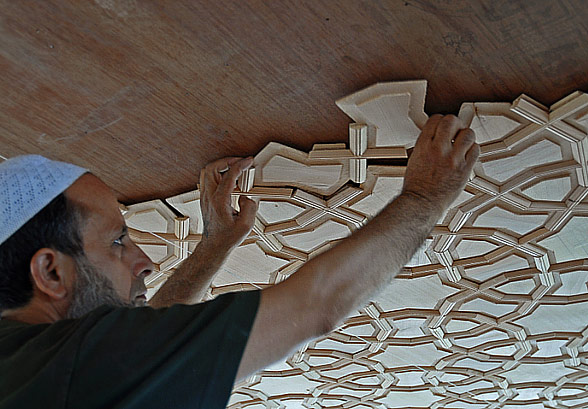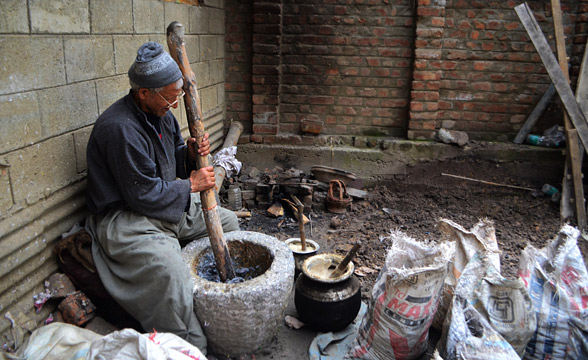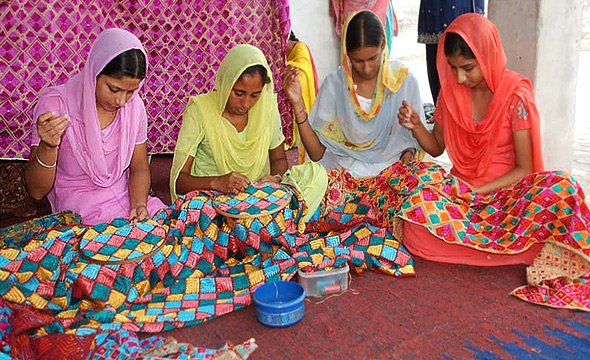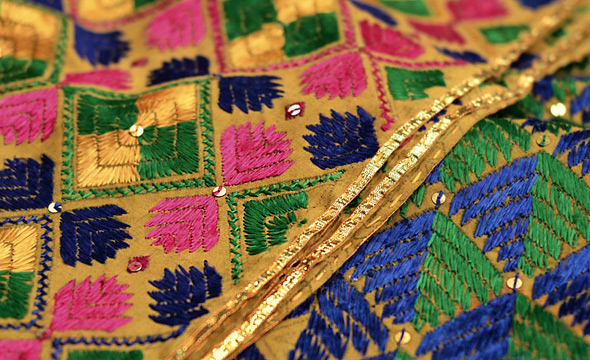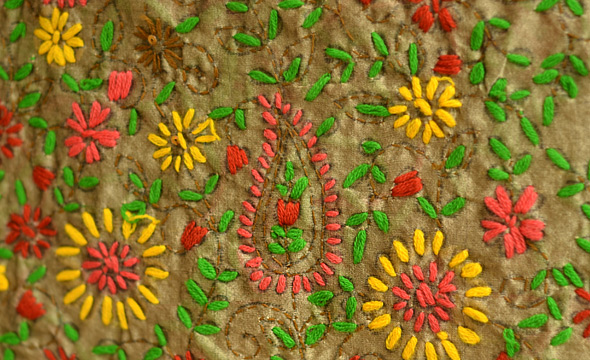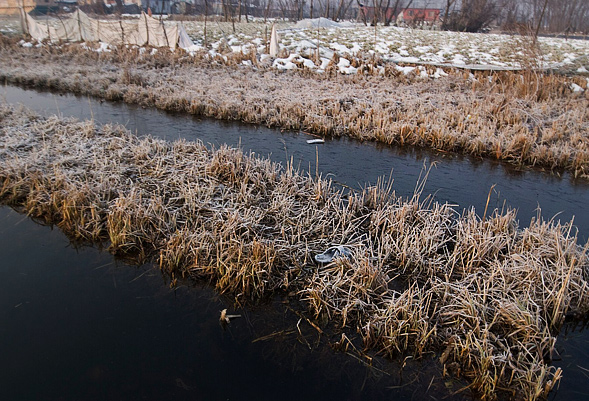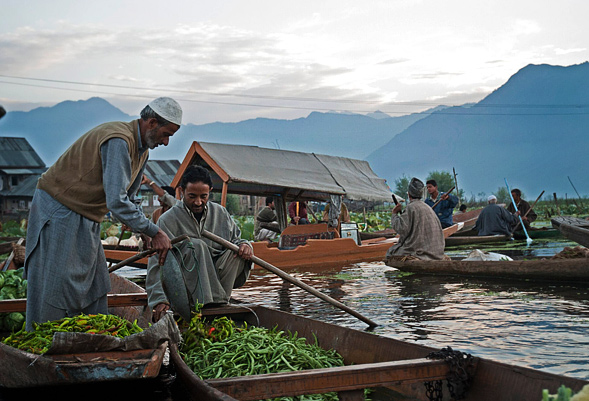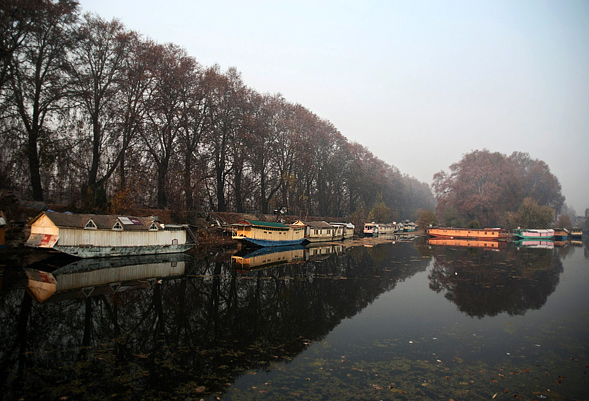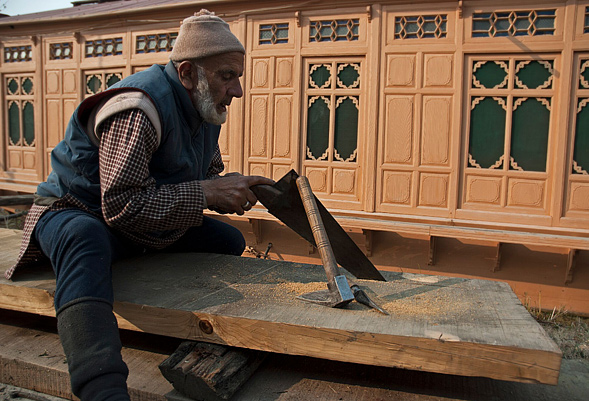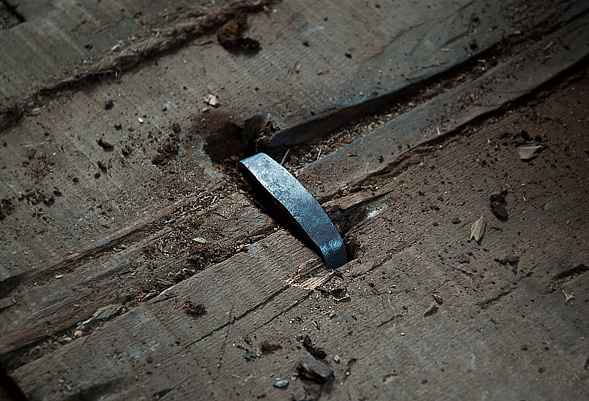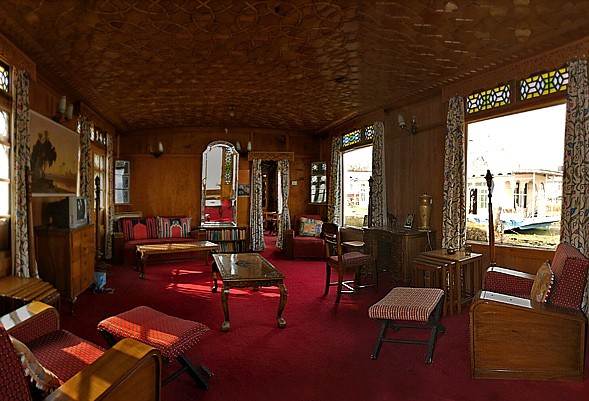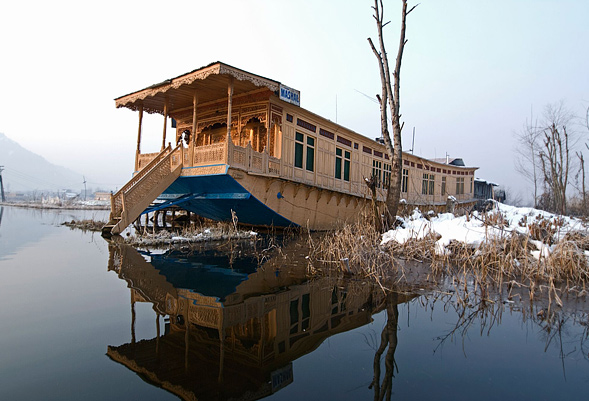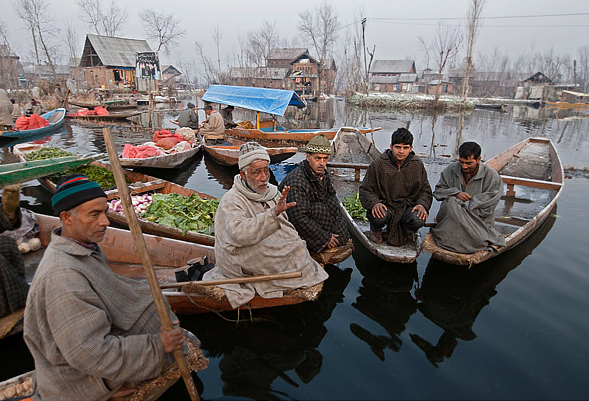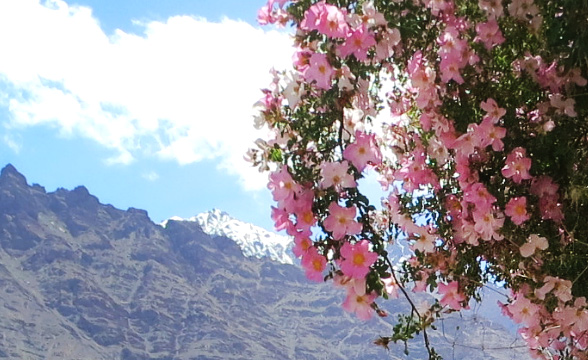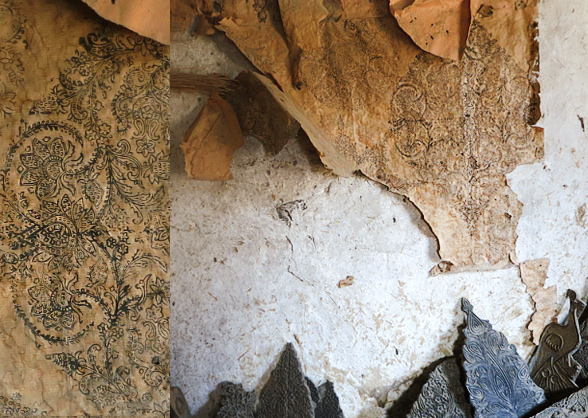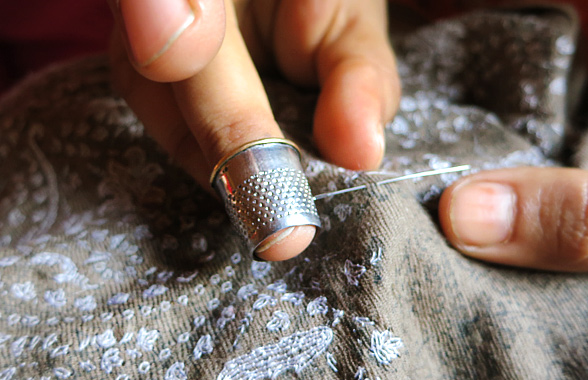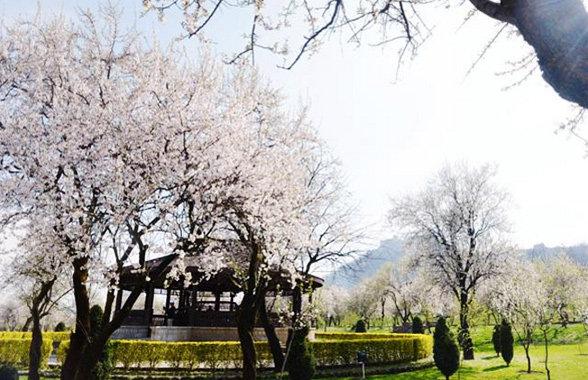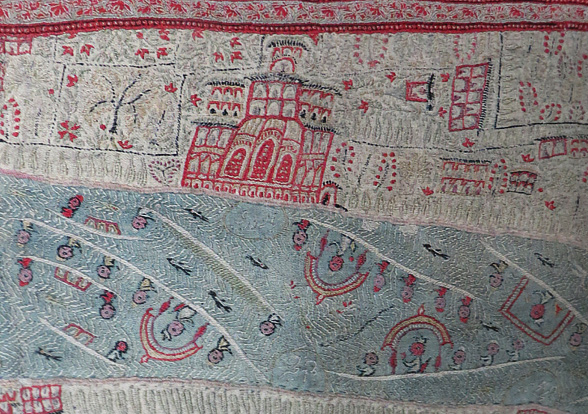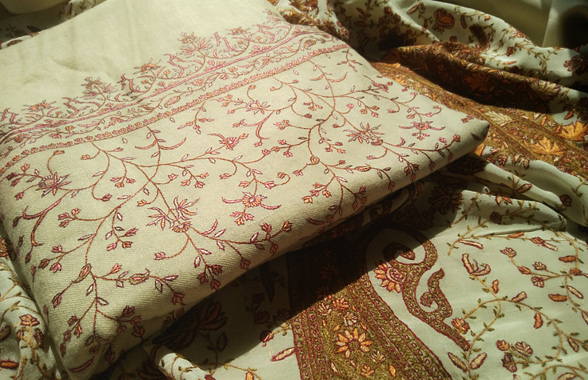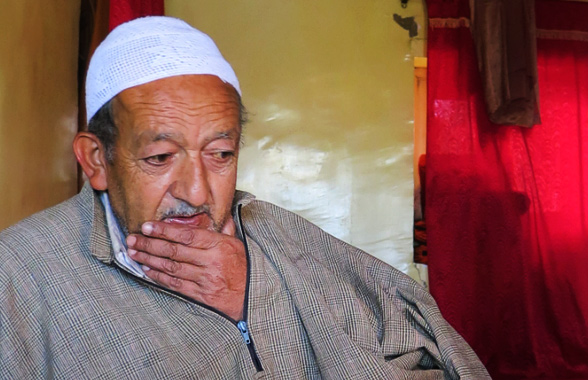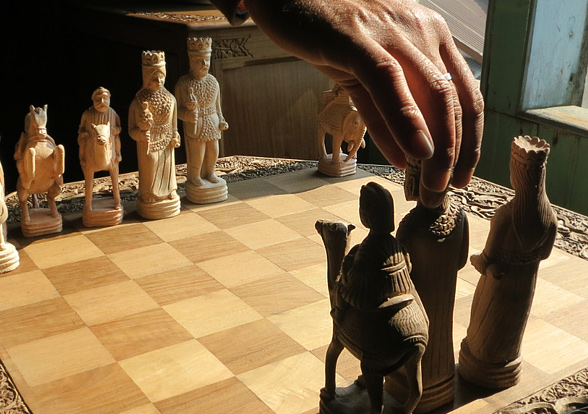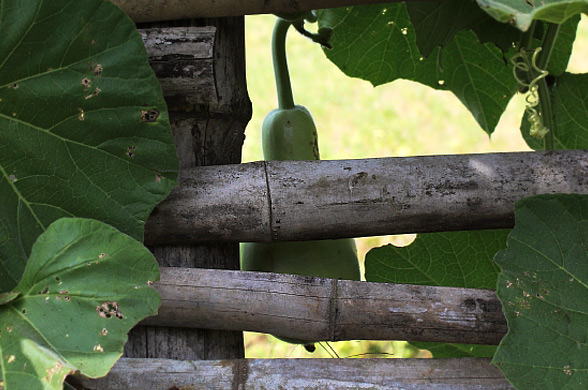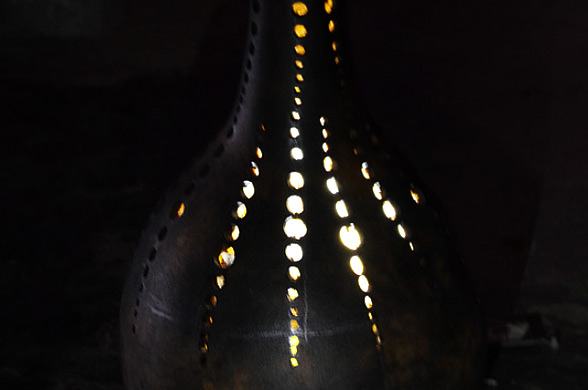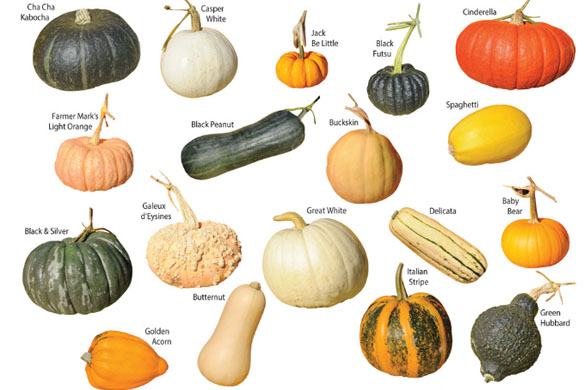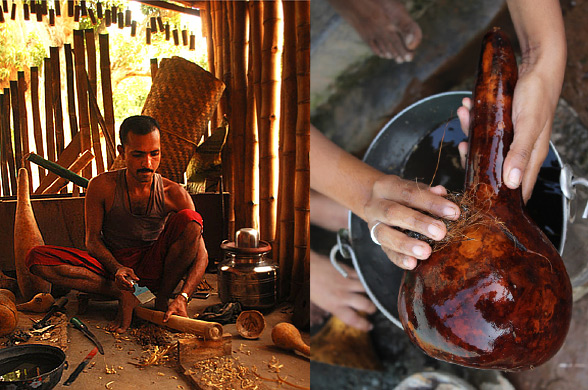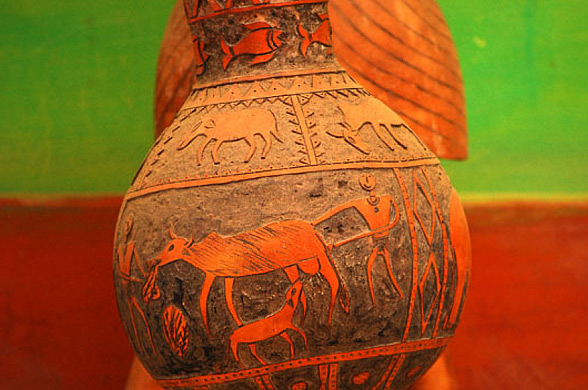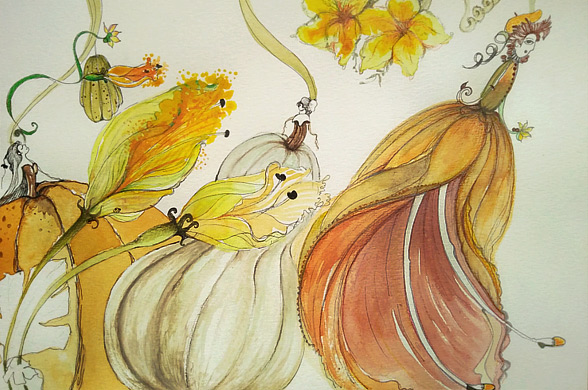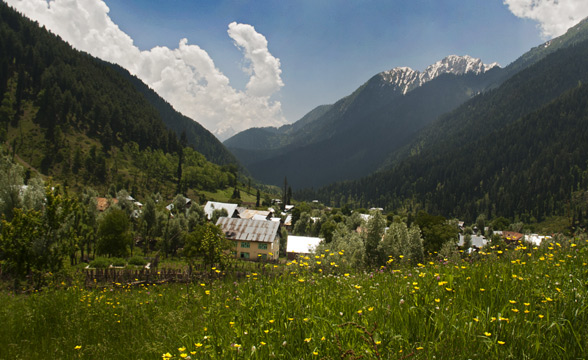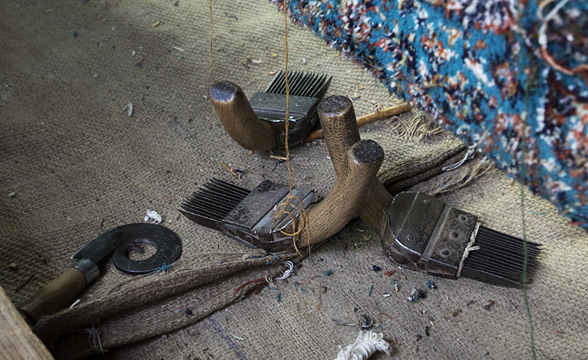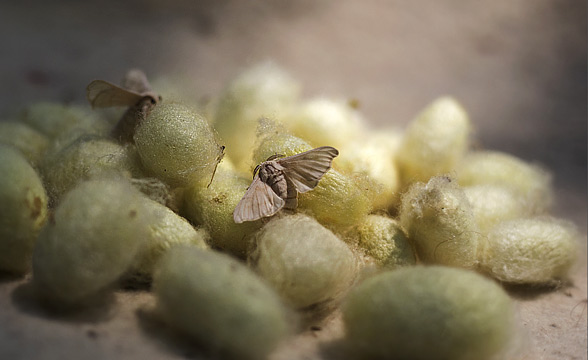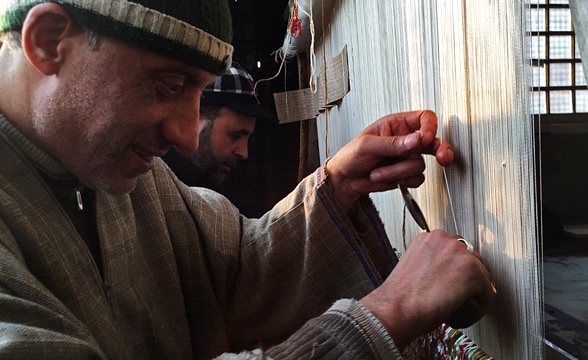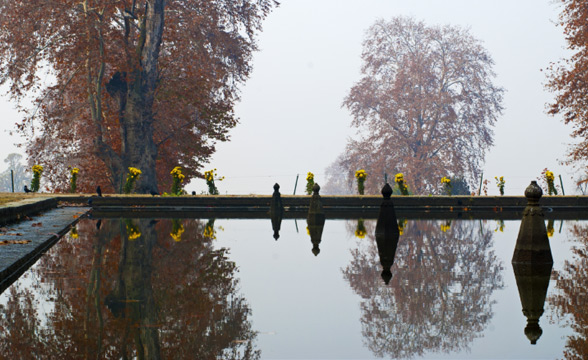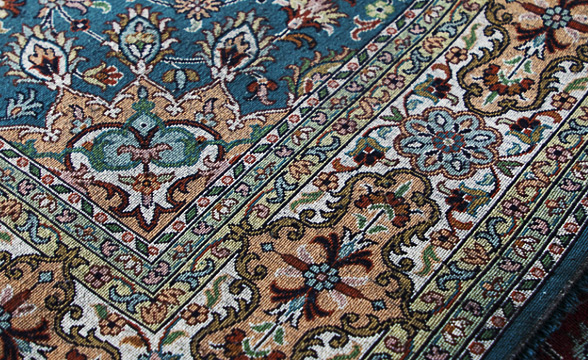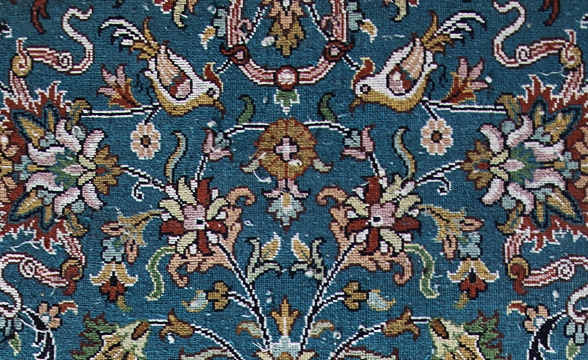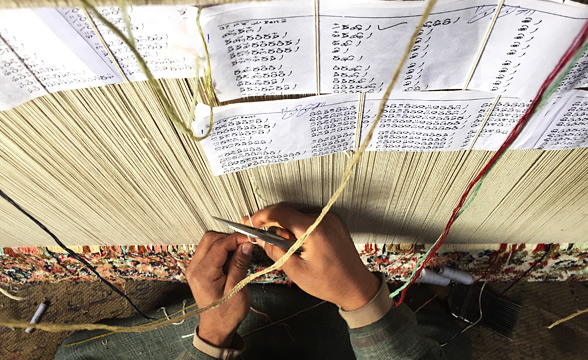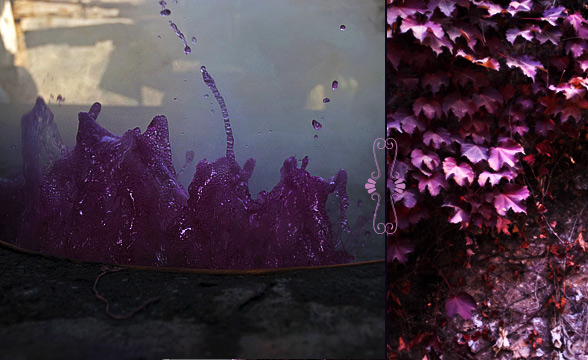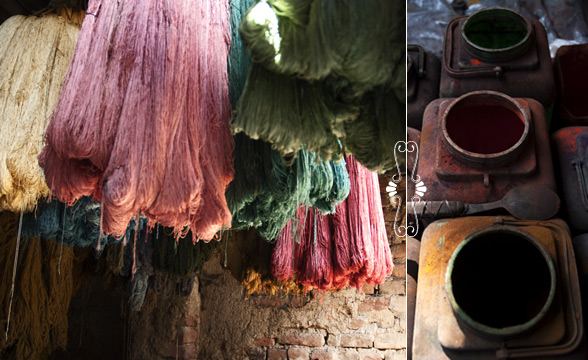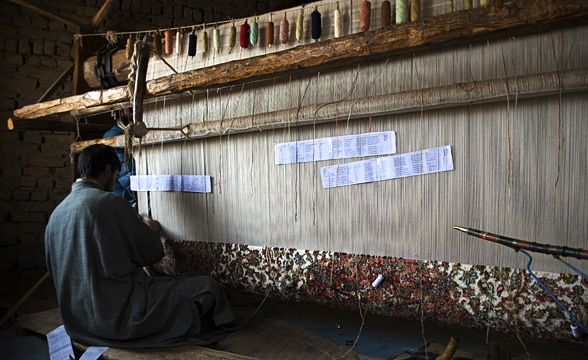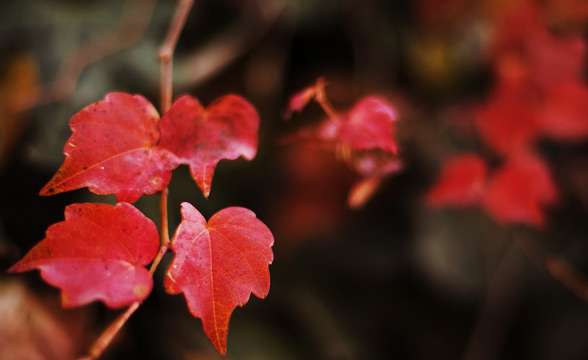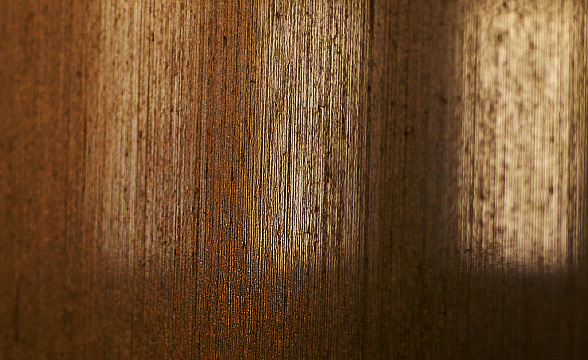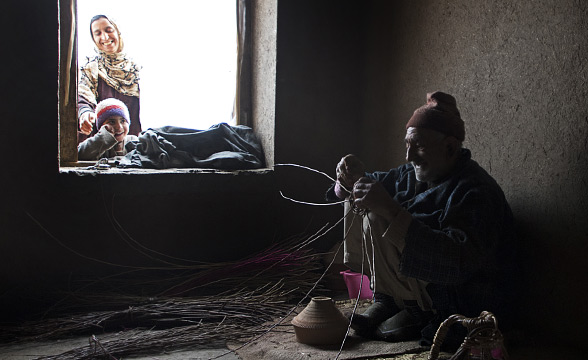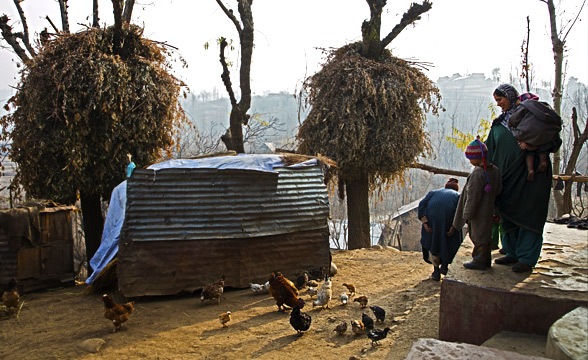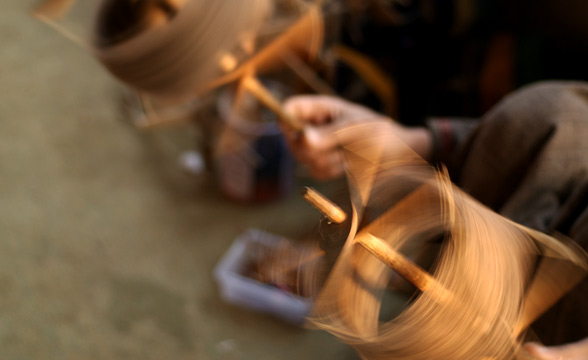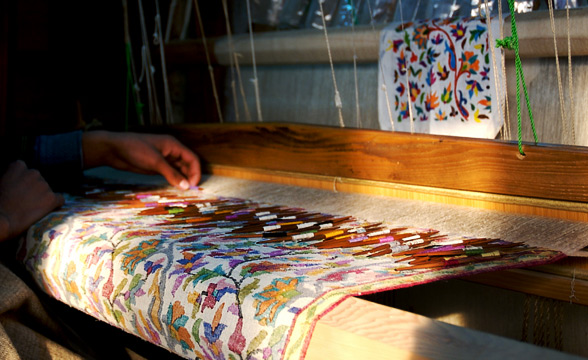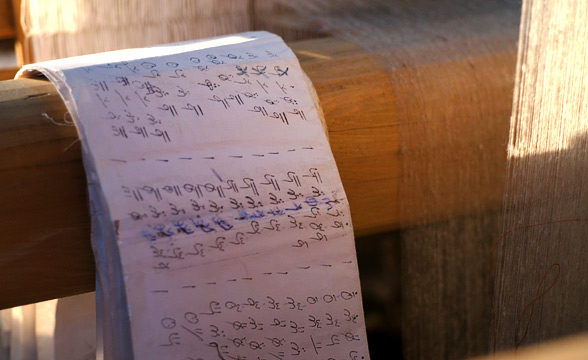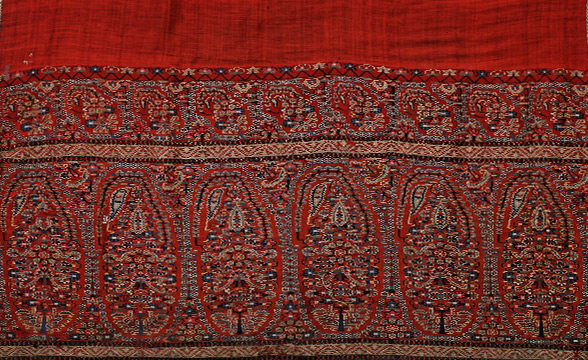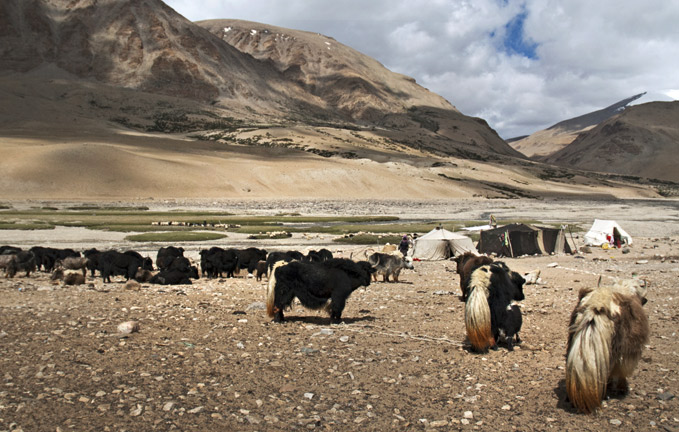![tso-moriri]()
“Here’s a mountain we climbed, where a burnished pathway leads to nowhere but oneself… here’s a river we crossed and pitched our tent next to, where its rhythm cradled us into dreams and an awakening to the beginning of another… here’s a place we have found where worldly words have no meaning… here’s a desert we have seen, where the secrets of this life is no more a mirage but a flaunting coruscating sky that unfolds onto you…”
“In dreams…. You mean…” she uttered with boredom written all over her.
“Here is a place where only silence seems to endure… And here they live in harmony, the north people – The Changpa… And through the distant chiseled edges as morning Sun beams a shaft onto the smoke drifting out of a shell… signaling an invite… here we are…”
“…Left to graze and gaze infinitely… And we have visitors visiting us today!”
![pashmina-goat-at-laddakh]()
Their roaring wheels scramble over the loose sand and stones, leaving a trail, they wave cheerfully to a herd of goats dotting the only significant green patch in sight.
“I wonder what they are so excited about… have they never seen a goat before, or grass or a grazing goat…”
“There will always be something left unseen here even if they might have seen it all… don’t you know the kaleidoscope this land is…” he says with a smirk.
“They envy unknown and yet they look for it.”
“To possibly convert it…. Into known…! Or what they think is known now.”
![pashmina-goat-himaliya-laddakh]()
“… for only if they knew how consistently still it is to be here… they might not seek anymore… these whiffler souls are craving for stillness while I am rotting here waiting for the moon to rise from a new direction someday… the sun to shine a beautiful pink for a change… or this snow! … this… this goddamn snow, to fall a little lesser… or even if it has to pour in hell loads…. And if it cannot not make relics out of us every year… to at least do it colorfully…Tch!” she sulks.
“Only a goat left to graze and gaze can say so… others have things to immerse themselves in…. And to bring you thrill… here she comes! Get ready for some humanly affection, some unnecessary combing and then… of-course… A shave!”
![changpa-women-with-kids]()
From the dark shell with its opening facing the rising sun, emerges a lady with burning incense filling the air. Warmly clad in a red cloak and a shawl holding a newborn to her back, she offers holy smoke to the consecrated animals in the corral, reciting prayers… looking beautiful in her headdress and Pabu.
She greets and invites the visitors for a cup of Gur-Gur, “Julley!” While relishing this hot cup of salty buttery tea, she rhythmically shakes a goat skin bag on her lap churning the butter inside… Offering a handful of Tsampa from her bowl she signals to mix it with Gur-Gur. In return they offer her some energy bars from the bag, she smiles and softly says “Juley!” This time it meant Thank you! She calls out Cho-Cho & No-No, her children engrossed in play in the dust with a new born foal… and hands over the bars to them… Excited and full of life they run back into their own world of play…
No more strangers to this bare landscape they are, at an altitude where the air barely grips onto the mountain peaks… at 4500 meters altitude, this is Changtang! One of the most extreme inhabited places on the planet, held daintily between the snow cloaked mountains…
“Some float and glide across the vast expanse of silent emptiness. The land absorbs their madness and lets them move through her simmering nakedness…. its home for them…”
![Image ~ Looms of Ladakh Women Cooperative]()
Image ~ Looms of Ladakh Women Cooperative
Nomads traverse through the vast barren emptiness, flocking their livestock for pastures that cannot be cultivated and for hundreds of years Changpa tribes have carefully worked out a process of rotating pastures to prevent overgrazing. To find new food for their flock they move to fresh locations every month or so, but along a known path… While men are away with their goats, sheep and yaks… women and children take over camp activities…
“Untouched by her mystical language some keep moving… at times also wondering why they ever came… traders to barter barley for mountain riches, many of them tend to lose their way in the mountain maze. ”
The camps are sprinkled with corrals and Rebo, with shafts of puffing chimney… Brightly colored prayer flags adorn the roofs of each Rebo. Women spend their days outside… weaving, spinning, churning butter and washing clothes by the stream…
![changpa-family]()
Some nursing infants, chatting with neighbors… Children play, dogs sleep… Old men spin prayer wheels, chanting prayer, make rope mended bridles or shoe their horses… Women with willow baskets on their backs collect dried dung to smolder pots of barley, Chang and yogurt or bake small loaves of bread… Riders are constantly approaching or leaving the encampment, some leading young foals or Yak calves… while goats and sheep dot the nearby mountain slopes grazing the fragile greens…
![Nomadic-pastoral-tribe-of-Himalaya]()
The Changpas of Ladakh consist of four tribes further divided into fourteen groups, with an average of 130 families per group. The four tribes are the Kharnakpas, the Rupshupas, the Korzokpas and the Anghoams, all traversing in their defined territories. All of Changpas’ lives and livelihood revolves around their livestock and they believe them to be sacred beings bestowed upon them by the gods. Changpas see themselves simply as Tibetan Buddhists; their beliefs seem to incorporate many forms and shades of Buddhism and they visibly travel on a different spiritual plane, but still, Buddhism practiced by the nomads has a duality to allow its followers both; to believe in inner spiritual way of living and to fear a vengeful god if one strays… maybe their nomadic way of life demands so. With each family owning over 200 of livestock they need a certain kind of order.
The best animals are dedicated to particular gods. These chosen sheep, goats, yaks, Dimos and horses have to be a particular color, well proportioned, strong and in good health. These animals are regarded as auspicious and are exempted from hard work, kept clean and fed well and are not to be killed or sold for meat.
![laddakh-monitery]()
“From within the ancient monasteries clinging on to the mountain edges, timeless silence hums through this living land, towering mountains, gliding across barren deserts, flooding hidden valleys… Everything everywhere is mystically wrapped in absolute stillness… Like an invisible spirit the pristine cobalt-blue canopy seamlessly mirrors onto the endless lakes, cascading onto the eternal quite of this lonely landscape…”
“…the occasional but assured fringes of white clouds… playing hide and seek with light on the beige canvas of these mountains… are the visitors…”
“This pristine silence flows past the dark storms within one…”
“…and the play brings out the child within…”
In the morning, after the sheep and goats have been taken into mountains to graze, women gather in groups of three or four outside, in the windbreak of the stone ring corrals, with hot cups of Gur-Gur and balls of yarn, weaving and socializing…
![changpa-women-making-yarn]()
Weaving and its related tasks are what keep almost all the tribes’ men occupied… children included…. Women with good weaving skills apart from winning respect from their peer also get many suitors as husbands. Weaving runs deep into the Changpa social fabric and literally defines a woman’s status.
Summer is when the wool is sheared, as they say the hair rises above the surface of their skin and is no longer a winter coat tightly gripping their body. A ceremony is held to begin the process and fleece is sheared in parts, to allow the animal adjust to the climate comfortably. After shearing, the wool is beaten repeatedly with a narrow stick, which softens and fluffs up the fibers, after cleaning of dirt and debris it is spun using a small portable drop spindle. This natural fiber is used to make Rebo, Namboo, Patu, floor covers, caps, socks, saddles, bags and blankets.
Women sit on the ground to use their back harness looms. To keep the warp under tension they push their back and legs against a large planted rock. The loom gives hard work to the body but has an advantage of being portable. Although each gender works only on their defined specialty, either male or female ably handle the tailoring and final stitching of the material into a finished product.
![Laddakh-yak]()
Only men weave Rebo using a fixed-heddle loom and it takes two men a year to make one. The coarse outer yak hair in a wide variety of dark shades is accumulated. Most of the hair is dark brown but varies from charcoal to raw umber to deep sepia to rich mocha. The hair is sheared, washed, beaten, spun and twisted and then woven coarsely, tailored and assembled by the way of stitching thin panels together. Tough woven ropes are braided using Yak hair and then sewn into the fabric at specific spots to allow pulling of tent’s slant walls.
![changpa-man-with-horse]()
Men always weave their own saddle, blankets and bags. For they only use light, natural fiber from goat together with the dark fiber from Yak. Each man in the tribe has his own individual design pattern that he weaves into all of his blankets and saddlebags. Like a barcode, it is woven in a series of dark and light bands of varying widths. Each Changpa parent passes their particular design down to their eldest son or daughter, who in turn passes the design on to the next generation. Thereafter the father has to come up with a new woven design for his blankets and bags, which is a variation of the original.
Women are the exclusive weavers of nomad clothing and woven fabric is usually dyed red or a shade of maroon. Women, regardless of age, are never seen in undyed clothes. The most constant aspect of Changpa clothing is their long maroon robe called the Goncha. It is worn by both women and men and is accompanied by a colorful sash tied around their waist. The woman’s robe flares below the waist with small pleats. Another distinctive part of women clothing is a blanket worn around the shoulders, like a cape. It is called a Yogar and is made from sheepskin worn with the wool side next to the body. The outer side is usually covered with a green fabric and accented with bold blocks of red. The Yogar was designed to give the wearer warmth, cushioning for the back from the weight of heavy loads and a carrying pouch for babies.
![Image ~ Looms of Ladakh Women Cooperative]()
Image ~ Looms of Ladakh Women Cooperative
One characteristic ritual they follow is to dress up their best as they get ready to shift their base form one place to the other…. At least the headdress and the shoes, if not the best of their Gonchas…
“First the goats, sheep and yak, followed by women and children… men at last leading the horses… dogs keep moving in and around, barking at the yaks to keep them walking…the caravan starts before the sun rise and its preparations much before…”
![changpa-tribal-family-with-animal]()
“If one is to see and comprehend the imprints of the encampments left behind… there is an unreality to it… like children at play building toy houses come up with the most simplistically harmonious representations of life, human race mollified by these mighty mountains… that also culture them, tends to live simplistically and harmoniously here…”
“So, that play-village of imagination is not such an unreality after all…”
“Maybe that is what we are doing too, here in Changtang with the nomads – playing our vital role in this toy dorp in balance… with occasional visitors to provide us a glimpse of what it is to live seeking it outside…”
![pashmina-goat]()
Survival for the Changpa is based on wild vegetation, the sole source of food for their large herds of livestock. Each day is predominantly designed around feeding and caring for their animals round the year. In blistering heat, in blizzards, in freezing temperatures and in driving rain, their daily duty remains the same, to take the family flock of about two hundred animals to distant wild pastures and guide them safely back home.
Goats have rapidly increased in number and in importance to the Changpa. They are regarded as being better able than sheep to adapt to a cold mountain environment, but their increasing status among Changpa has been actually due to increasing demand for Pashm, the soft and silky inner fleece of the Tibetan mountain goat. This increase in demand could also be attributed to the closure of the border between Ladakh and western Tibet, stopping the supplies of Tibetan Pashm to Kashmir. An approximate number of Pashmina goats kept by the Ladakhi Changpa as of today is about 170,600. The yarn spun from it is called Pashmina. This Pashmina is sold unprocessed to middlemen to be used by the weavers of Kashmir valley.
A good deal of the Changpa economy is cashless, most of what they require is self generated. With so many animals, dairy products are plentiful and enjoyed… They make a lot of soft cheese, which is preserved for winter by drying in the sun. Tsampa and butter tea are the nutritional cornerstones of all the mountain people of Ladakh and also a limited amount of bread and potatoes are a part of their diet. When produce such as barley, rice and sugar are required, they usually barter or trade for it with Pashmina, bulk wool or animals. Larger cash sales occur when butchers come to Changtang to buy quantities of sheep and goats on the hoof. Changpa only sell their animals to control their heard size in order to sustain the resources at their disposal.
![changpa-women-in-traditional-dress]()
The women in the form of jewelry hold much of the portable wealth of a family; their most valuable possession is the Ped-rag, an extremely large and heavy headdress that runs from her forehead down to her mid-back. It is inlaid with large turquoise stones from front to back, lined with silver charms and coral on the edges. It is passed down from mother to eldest daughter at the time of her marriage…
Weddings in Ladakh are an elaborate affair but nomad weddings are a never-ending party with a dense protraction of eating and drinking. Some marriages are planned and arranged as early as two to three years, with many months of planning… while others are hastily arranged with the word of marriage kept secret for as long as possible to prevent Nama kotches – bride’s kidnapping. The bride-kidnapping marriage is not common but neither is it rare, making it unique to the culture of the land… and the girl in question is in no compulsion to oblige and gets to choose…
“We watch the land dress up for another act, another season, another life…We are changing forever, just so that we remain the same. And love will always be love… No matter what clock you drape her with… No matter what form you seek her in…”
“What season could it be in love.” she asks in her ovine tone.
“…We left behind deserted dunes that were quietly layered with winter’s first snowdrifts… looked deeply into the swirling green waters of the cold river and felt her freezing over… envied the ice that seemed to crawl out through the brown earth and spread across to hug this empty land… it must be time for spring now!”
Inside the threshold of each family Rebo home, regardless of the tribe, lives a complexity of superstitions, rules and protocols. The tent is dived into two spheres by gender, with the stove in the centre of the Rebo. Left is the women’s domain where food, utensils are stored and cooking is done. To the right is the male’s side, where men sit, stored their saddles and riding gear. Males could move between the right and left side, but females rarely ever venture into the right half of the tent… all said and done the Rebo is the nucleus for a Changpa family, stove being the source of heat to keep the place warm. They eat, sleep and socialize sitting or lying on a woven Yak or sheep wool rug around it…
Every day from time immemorial, between wars and invasions, in extreme temperatures and heavy snows, through modernity and encroachments… in thin air and long droughts, nomads and traders have continued to traverse these mountains of Changtang with their animals…
![Image ~ Looms of Ladakh Women Cooperative]()
Image ~ Looms of Ladakh Women Cooperative
“It is so still on these wind-scarred barren ledges that they can hear the desert sigh… can hear the creaking of the mountain and the laughter of flying snow… and know that their heartbeats are heard too…”
“And yet it is this barren stillness they would call home… why?…. Because they know that that silence is not so barren after all… that it makes them soulful after all… And the lost traders… who are lost because they paid their senses to the mirage… and remained untouched… call in their agony her silence sterile… shall also find their way out someday… Someday, someone who has understood the mystical language she talks in would show them all… the way… And they will come back again to take glimpses of her shimmering skin… skin… that is never the same… and keeps them at it… and that is where they stay… untouched… if they don’t listen…
For the spirit of the land lives with those who are touched… and they no more seek…”
Julley…
~
Changpa – The north people, Nomadic pastoral tribe of Himalaya
Changthang – The area east of Ladakh and west of Tibet populated by Changpa
Julley – Greeting of the Ladakhi, on both meeting and parting, also means thank you.
Gur-gur – Onomatopoiec word – the sound made by cylinder wooden churn in which butter and ingredients of tea are made – hence gur-gur chai – butter tea
Pabu – traditional footwear made out of available leather
Tsampa– Parched barley flour, the staple food of the Tibetan peoples also called as Ngamphe in Ladakhi.
Cho-cho and no-no – Infants are not given a name till they are 1-2 years old, prior to that baby girls are known simply as cho-cho and baby boys a no-no.
Rebo - Rebo is a tent made of yak hair constructed over an excavated site roughly two and half feet deep and 20ft wide on either side.
Dimo – Female yak








